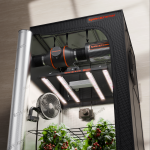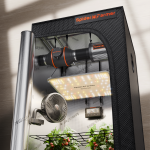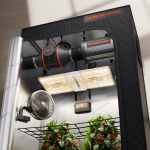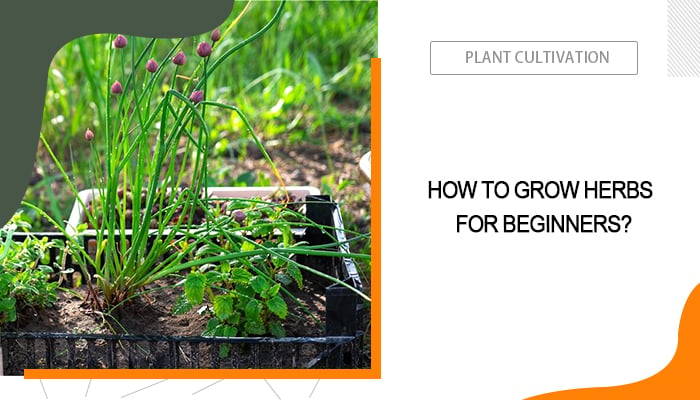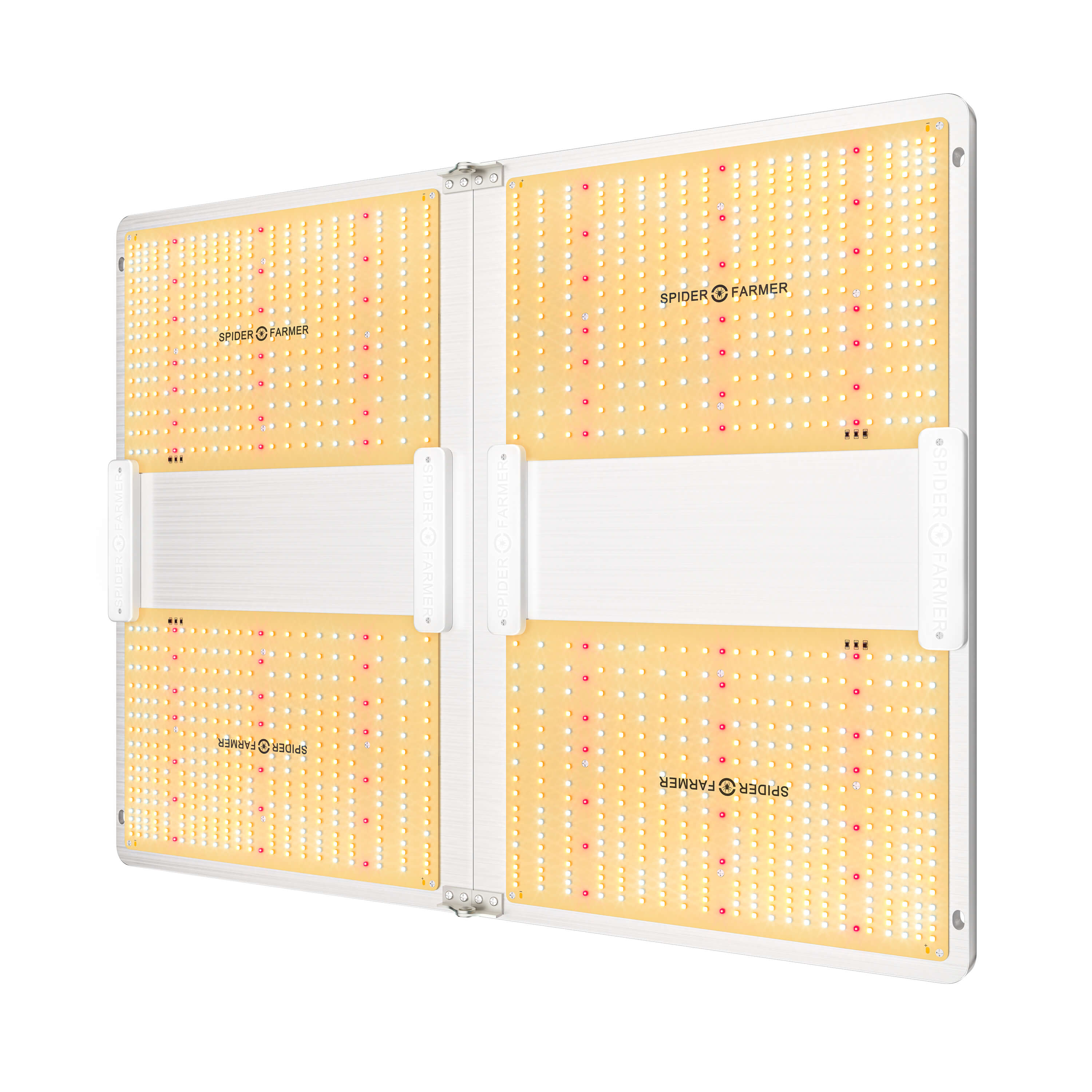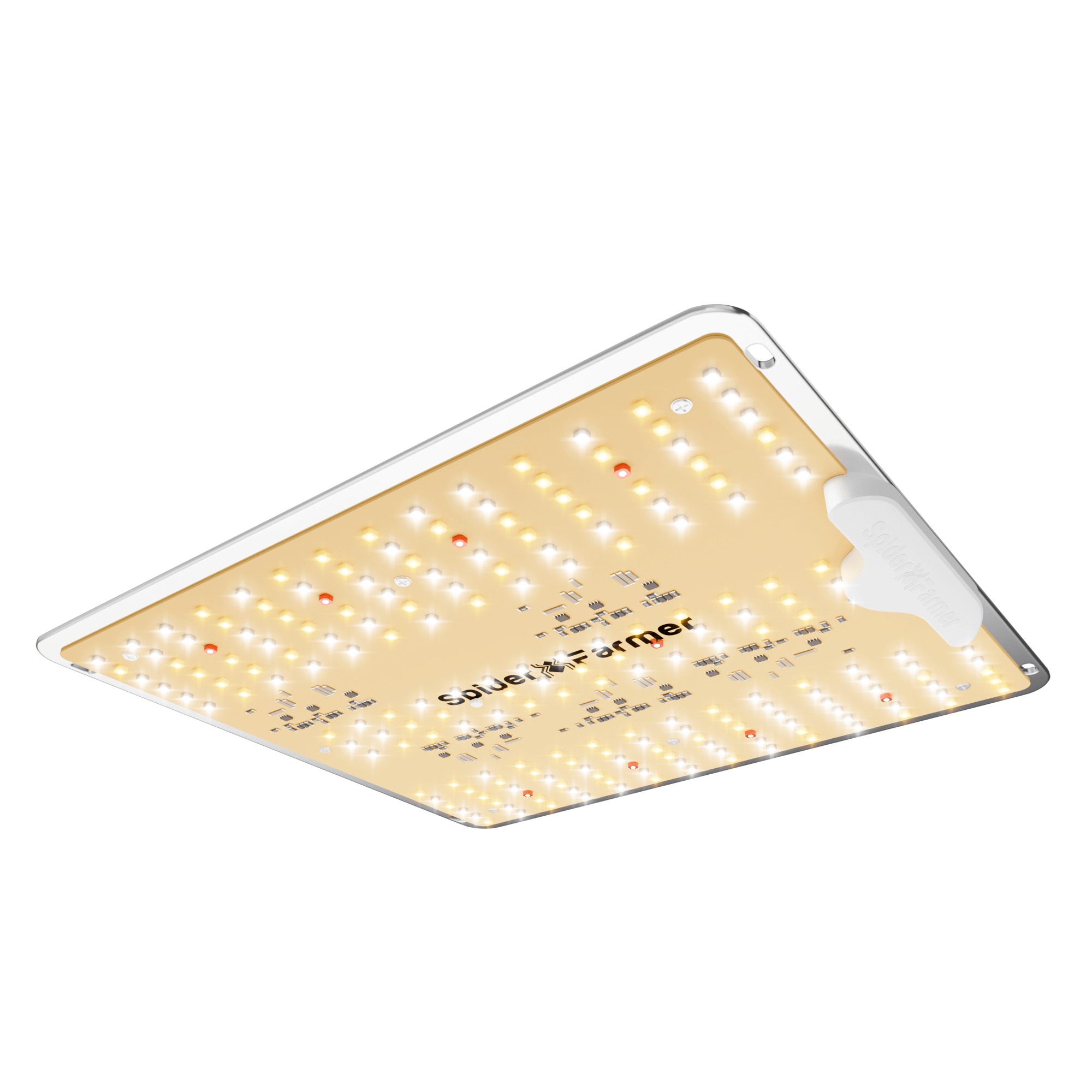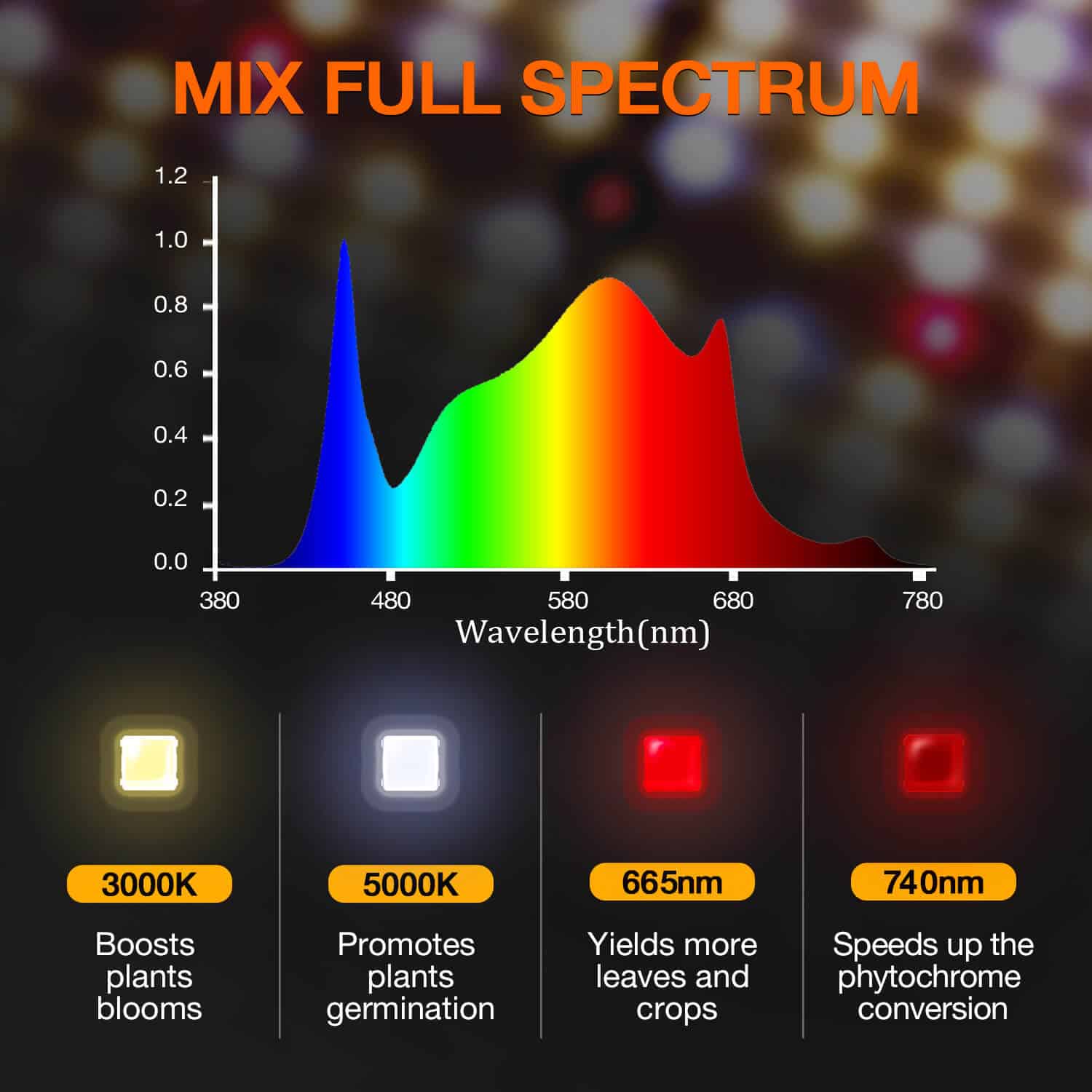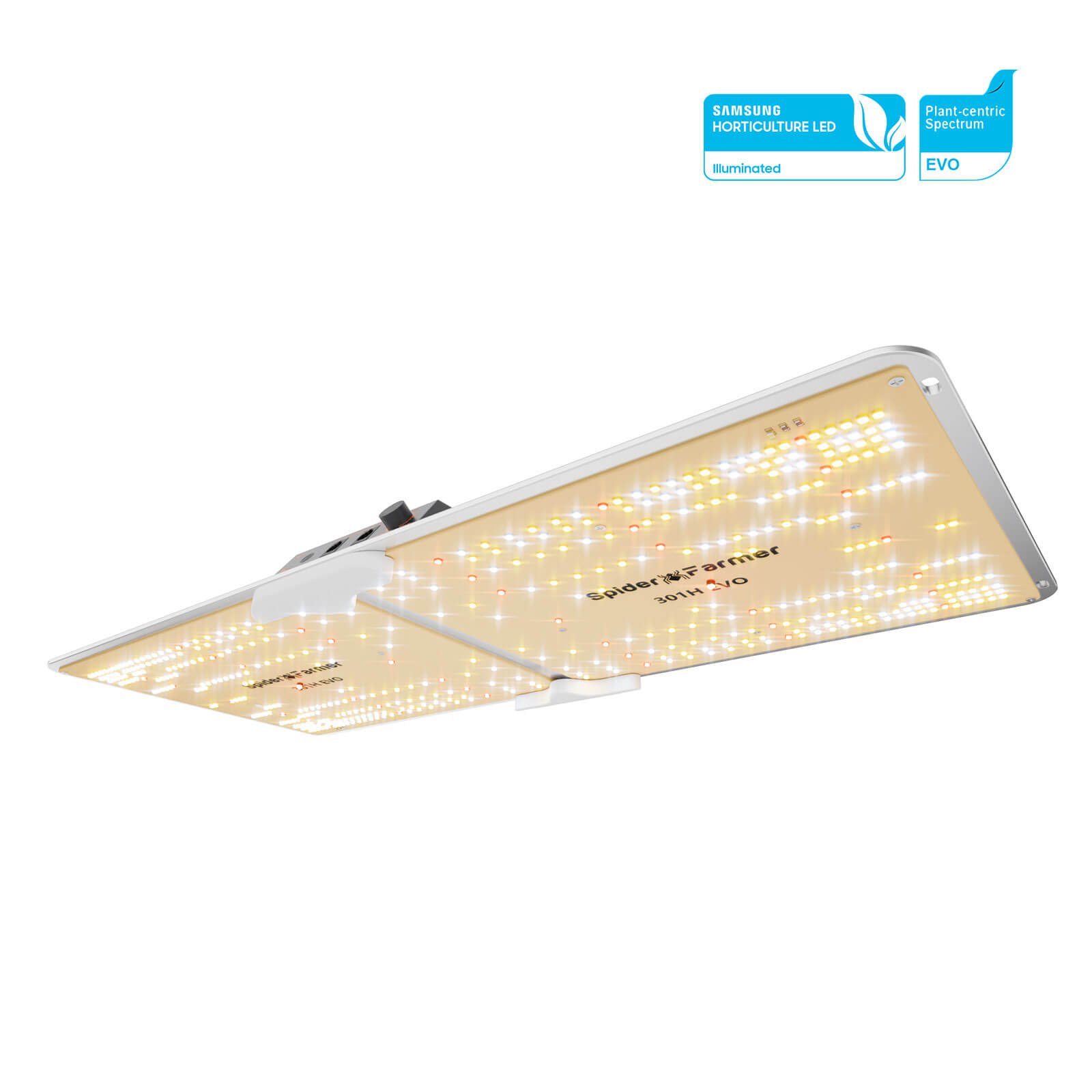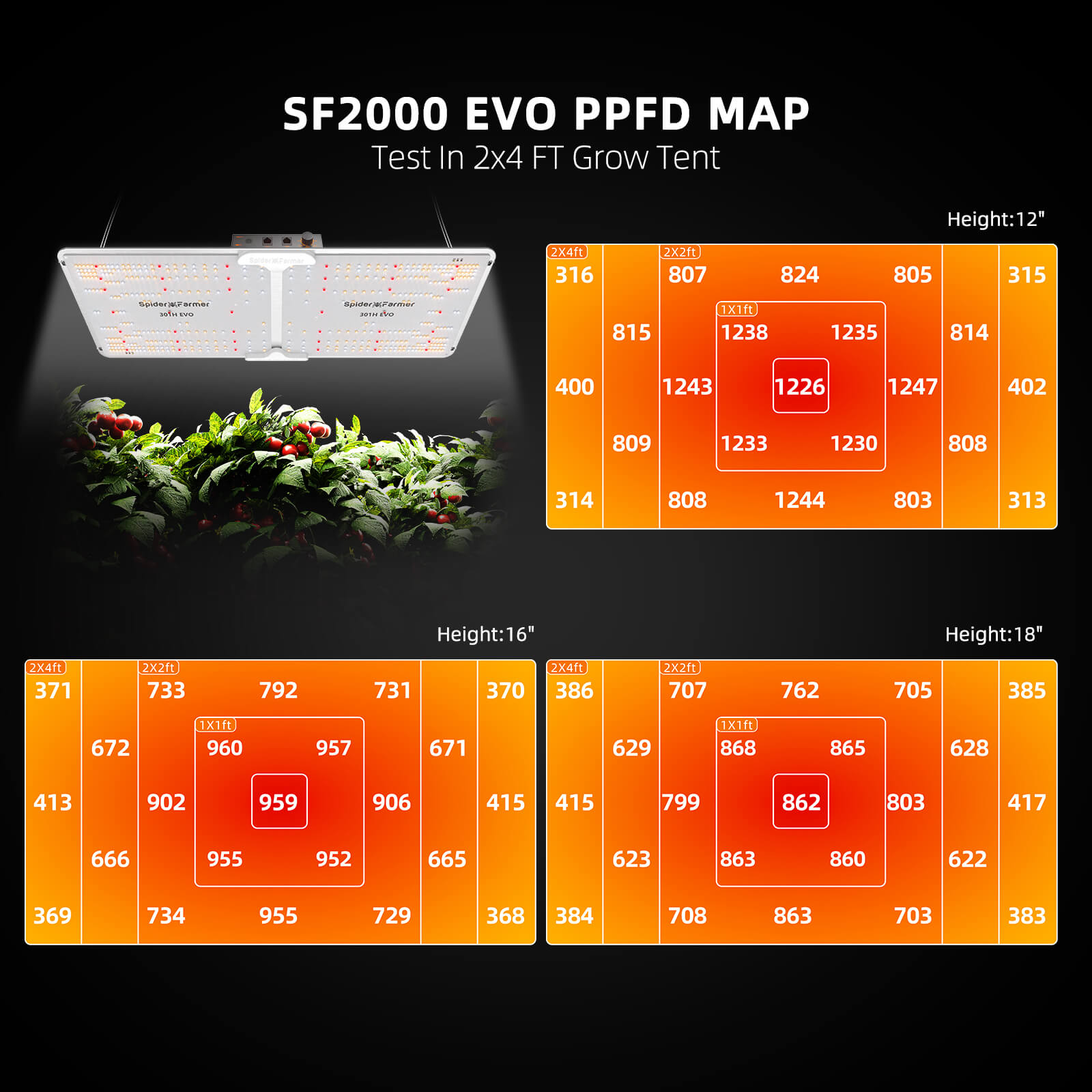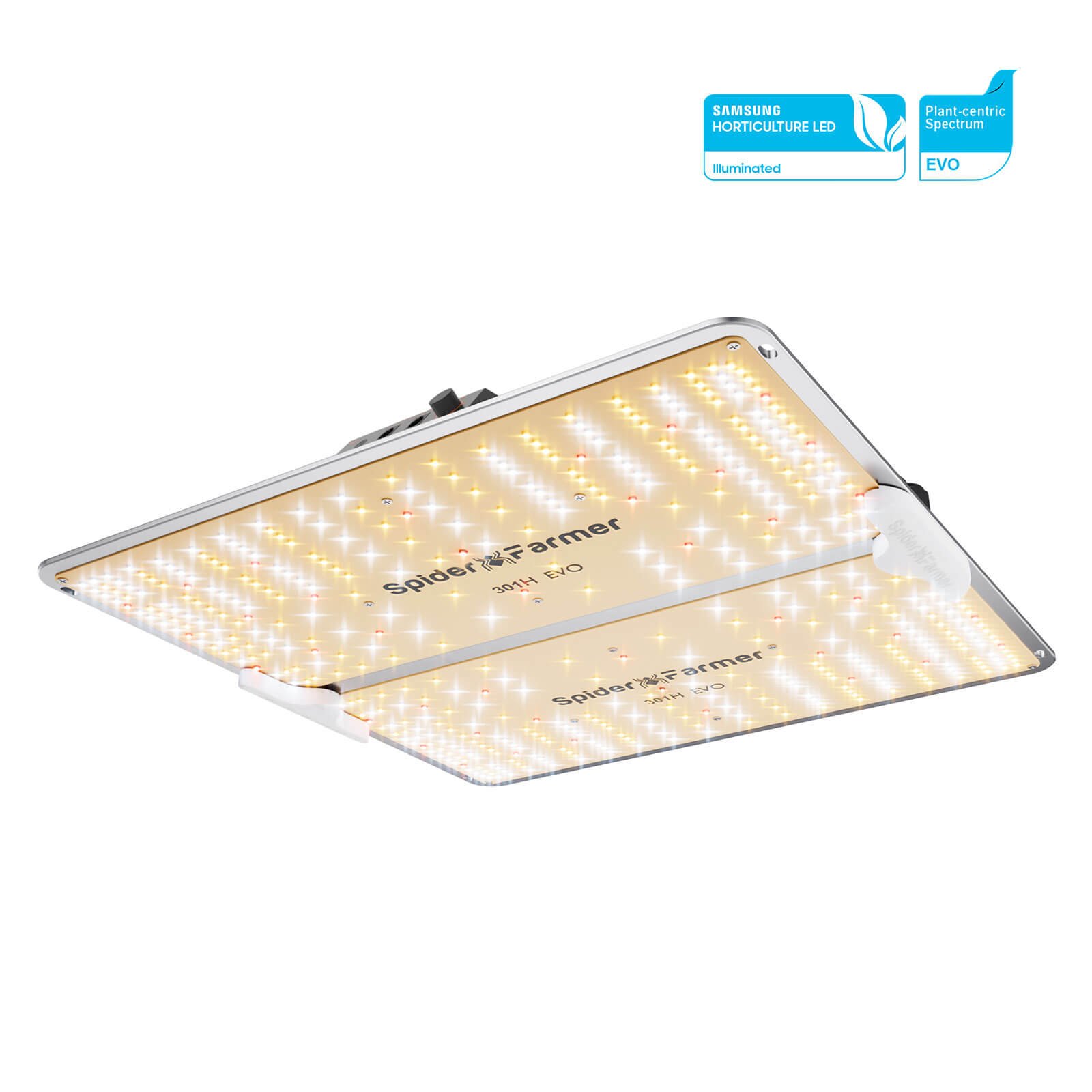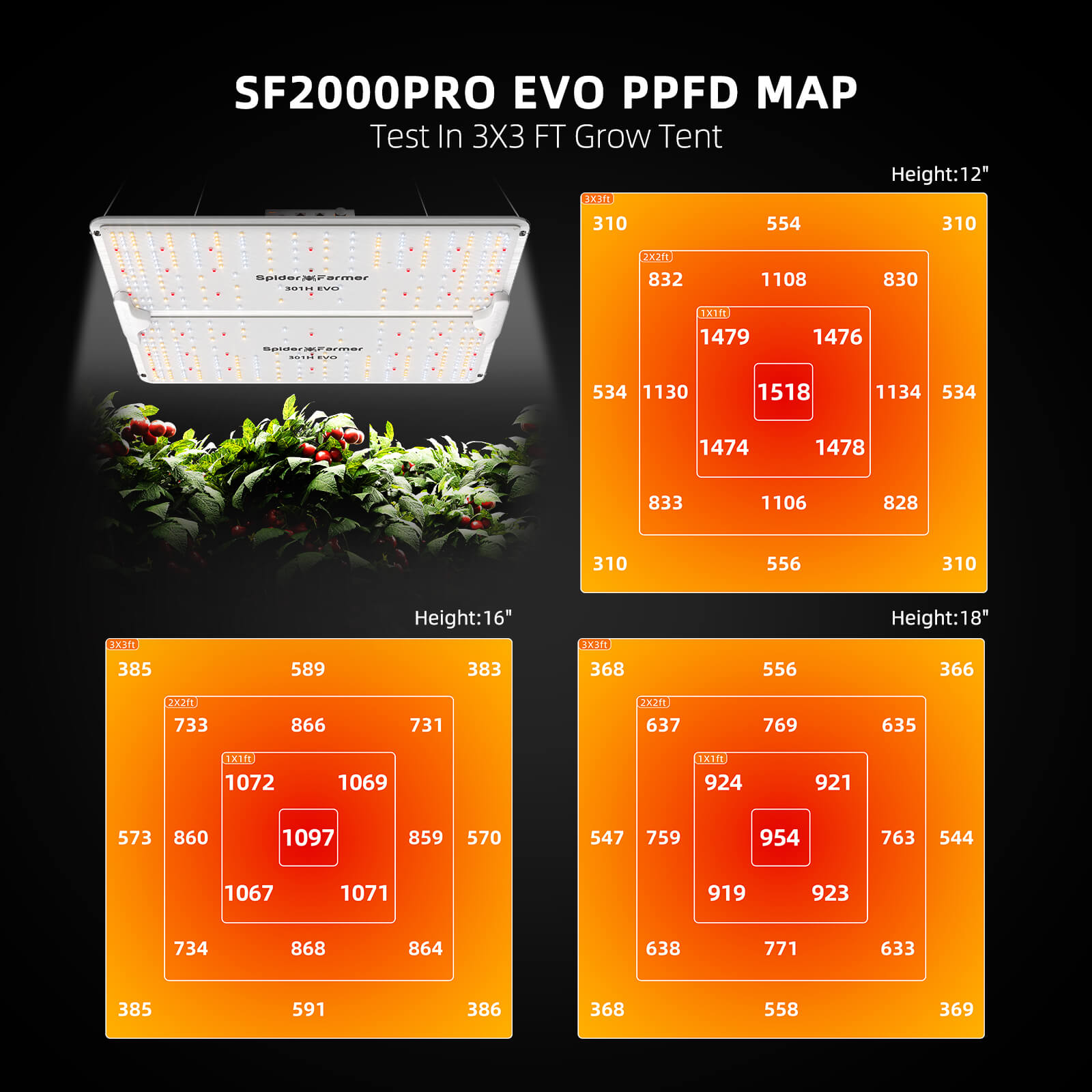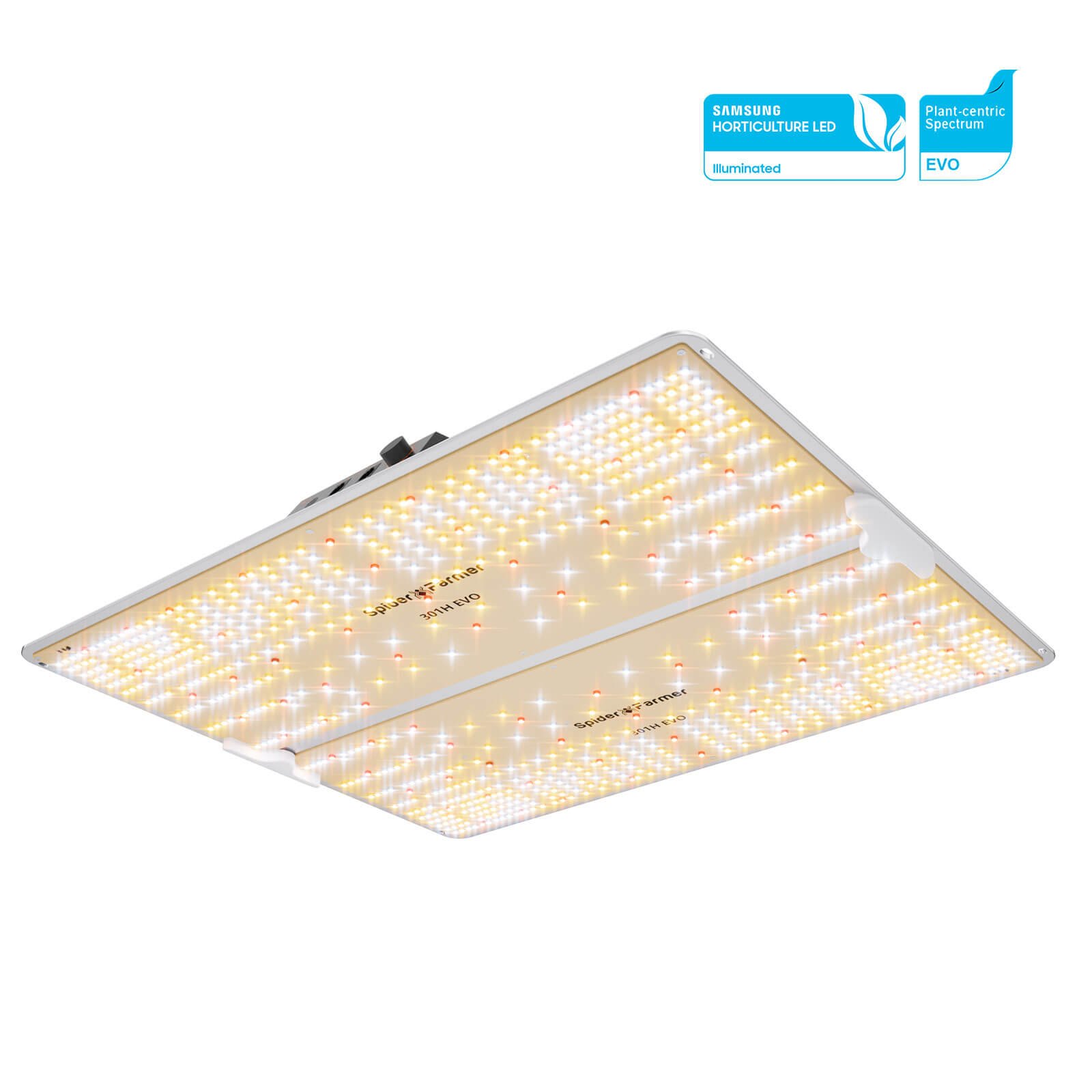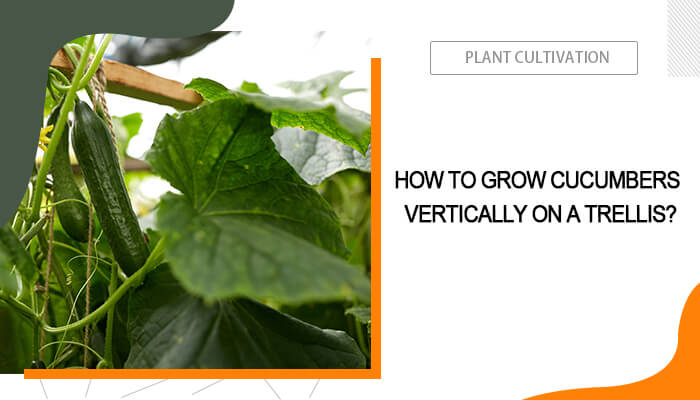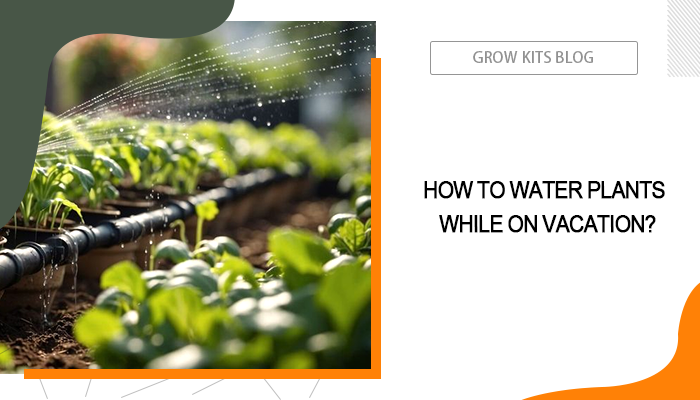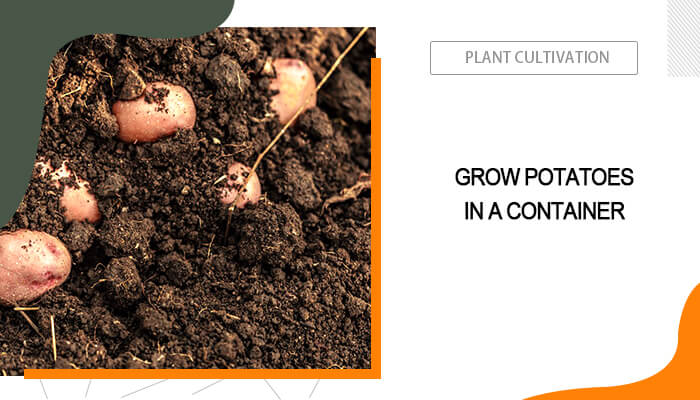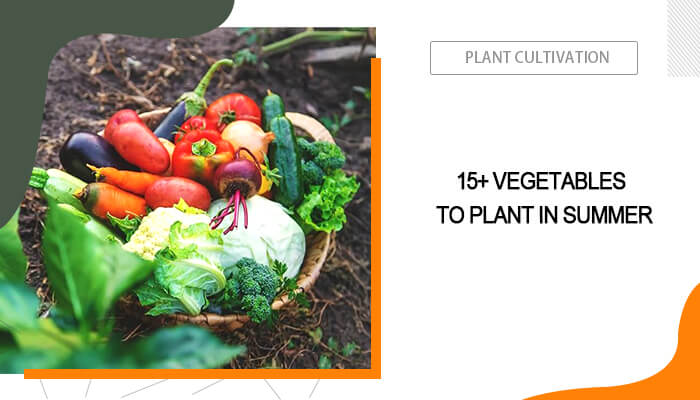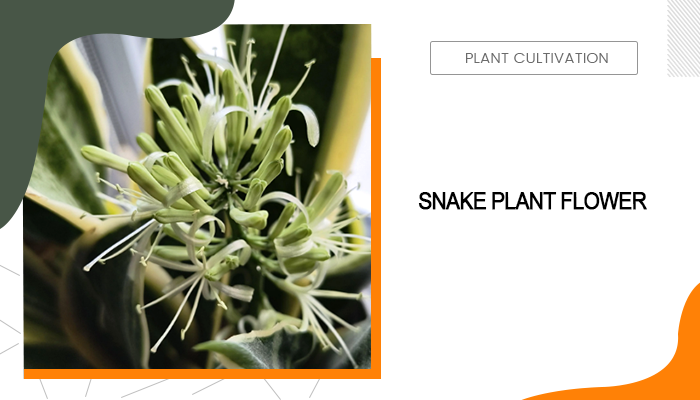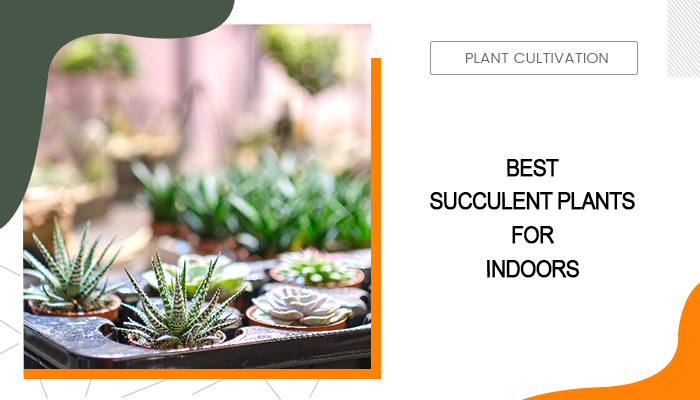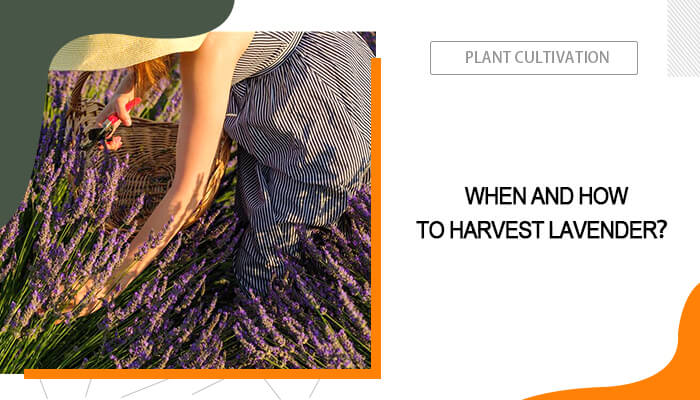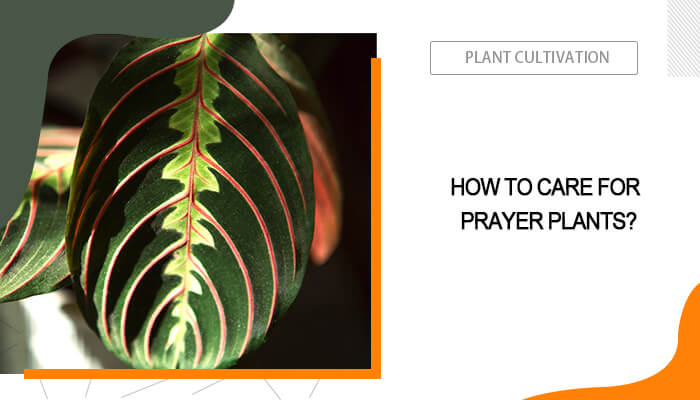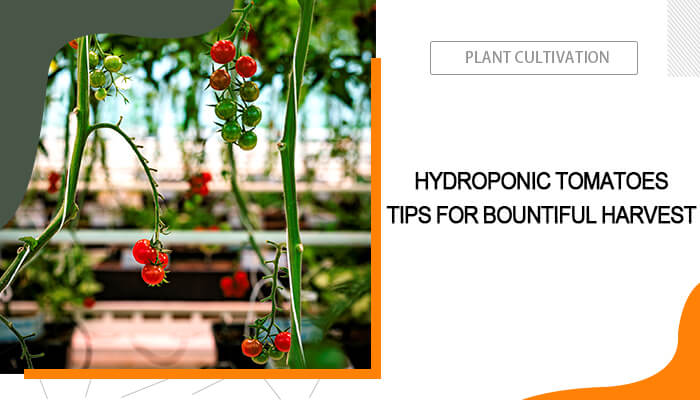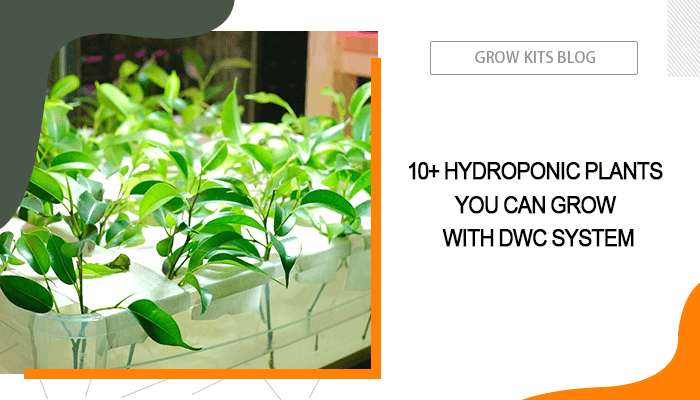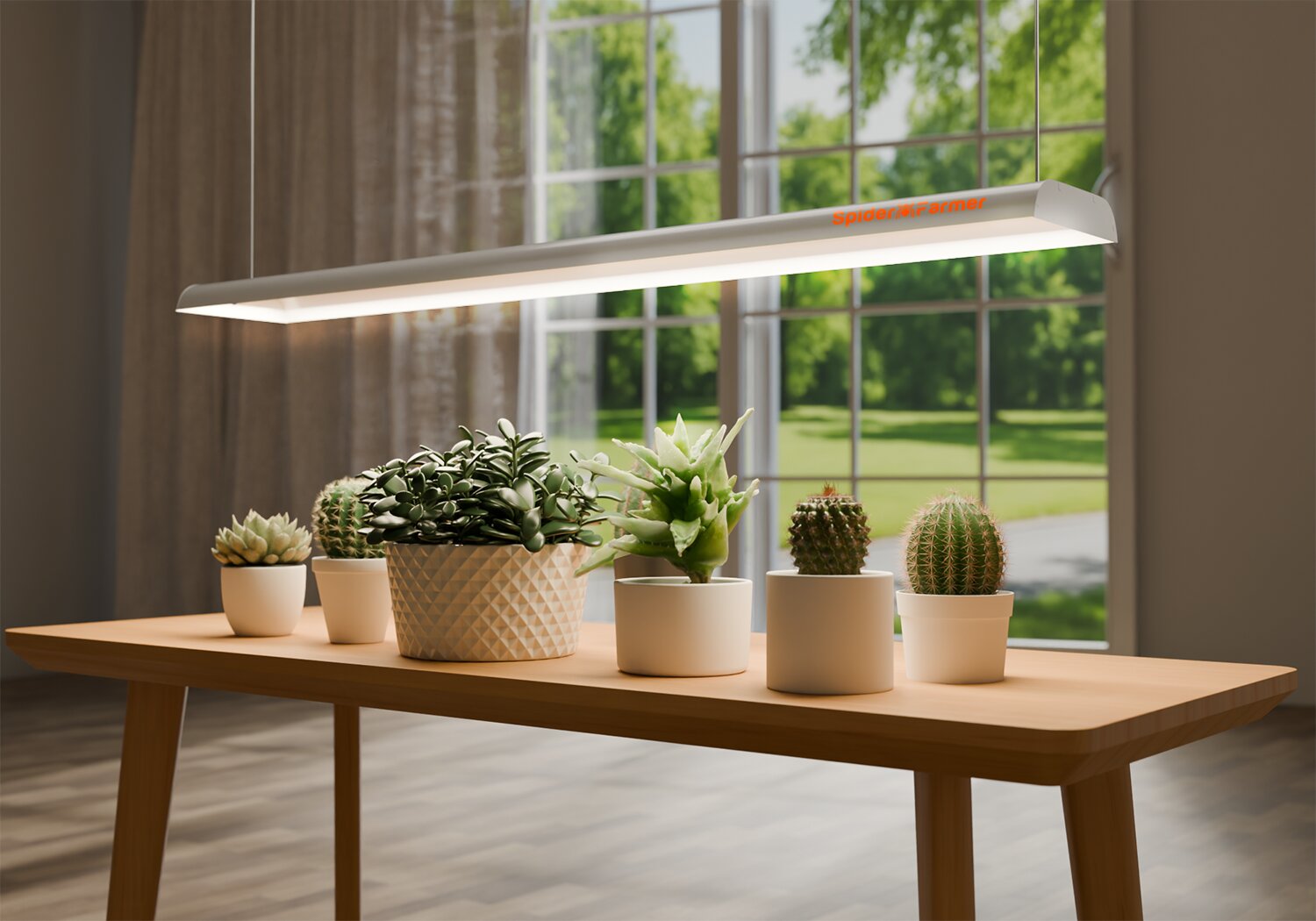As summer approaches, it’s time to bring fresh flavors and aromas into your home. As a popular plant for indoor gardening, herbs are not only versatile in the kitchen but also add beauty and fragrance to your surroundings. From traditional raised beds to modern vertical gardens, and from simple container plantings to elaborate themed gardens, the possibilities are endless.
In this guide, we’ll explore herbs for containers and tips for growing herbs in containers. By the end of the post, we’ll also provide 10 interesting herb garden ideas. No matter you’re a herb-growing beginner or an experienced expert, you’ll get insights from these herb garden ideas.
Let's dive into the world of herb gardening and discover how you can cultivate your green oasis filled with fresh, aromatic herbs.
Table of Contents
Herbs for Containers
If you want to have fresh, aromatic plants at your fingertips, you can choose a group of herbs for containers. Whether you have a small balcony, patio, or indoor space, you can find a group of herbs to grow in containers.
The Best Herbs to Grow in Pots
Basil
Basil is a fast-growing, aromatic herb that loves warm weather. You can use it for Italian dishes, pesto, salads, and more. To grow basil at home, place it in a sunny spot (at least 6-8 hours of sunlight daily) and keep the soil consistently moist but not waterlogged.
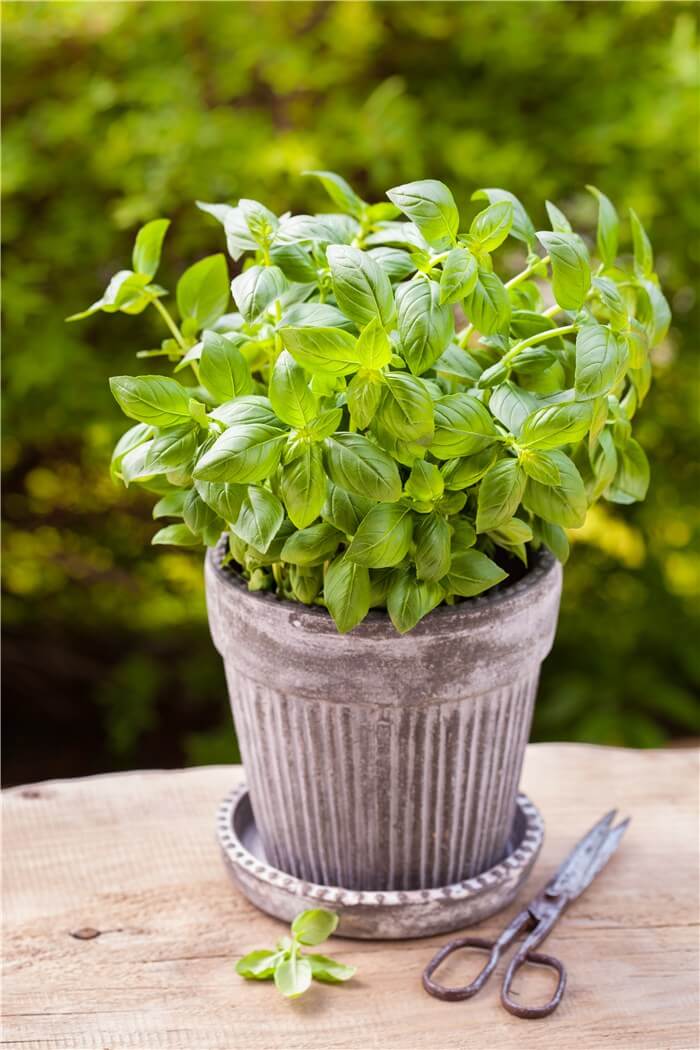
Herbs for Containers - Basil
Mint
If you want to make some tea, cocktails, or salads, you can grow mint. Mint is good for teas, cocktails, and freshening up salads or desserts. It grows vigorously and can quickly take over a garden bed. Mint prefers partial shade and consistently moist soil and can tolerate a wide range of soil types, but does best in well-draining soil.
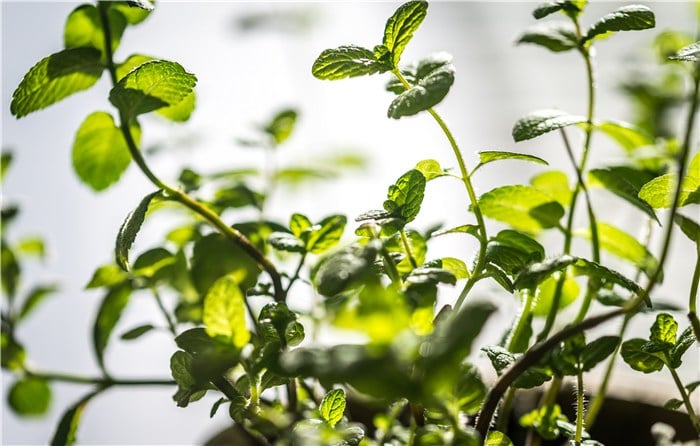
Herbs for Containers - Mint
Parsley
Parsley is a hardy herb that can tolerate cooler temperatures and partial shade. Parsley is a hardy herb that can tolerate cooler temperatures and partial shade. It needs well-draining soil and regular watering. Usually, it takes about 70 and 90 days from growing to harvesting parsley. From soups and stews to garnishes and salads, this herb is also widely used in cooking.
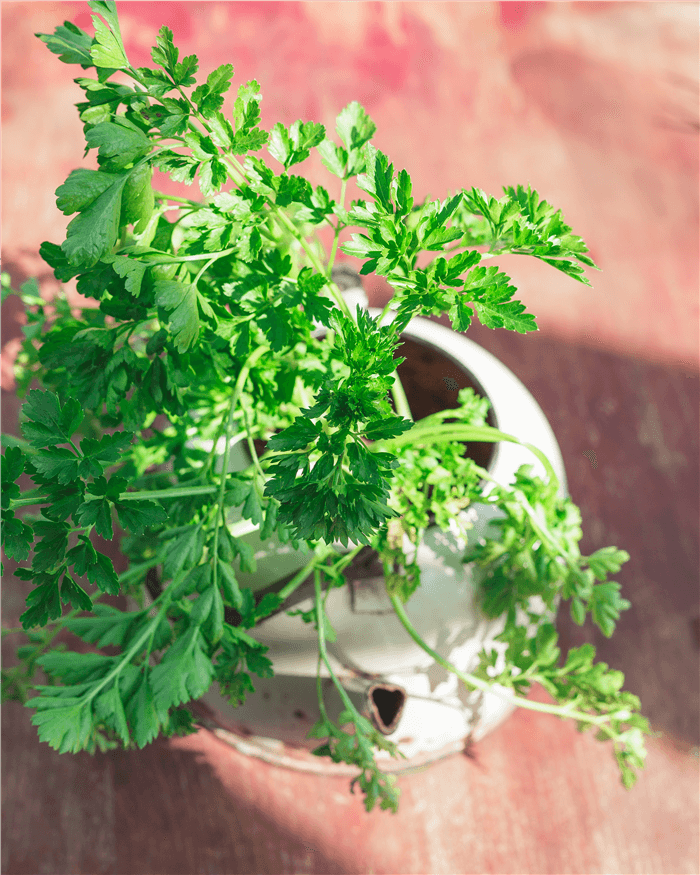
Herbs for Containers - Parsley
Thyme
Thyme is a low-growing, hardy herb that prefers dry conditions. It thrives in full sun and well-draining soil. Avoid overwatering, as thyme can tolerate drought conditions.
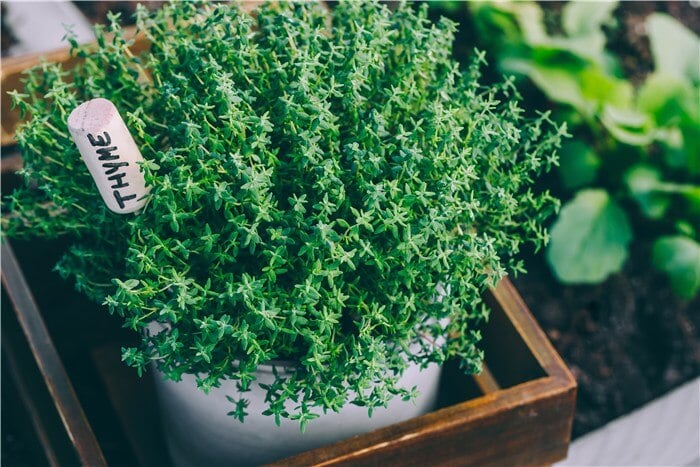
Herbs for Containers - Thyme
Rosemary
Rosemary is ideal for roasting meats, potatoes, and adding flavor to soups and stews. It is an evergreen shrub with needle-like leaves that can grow quite large.
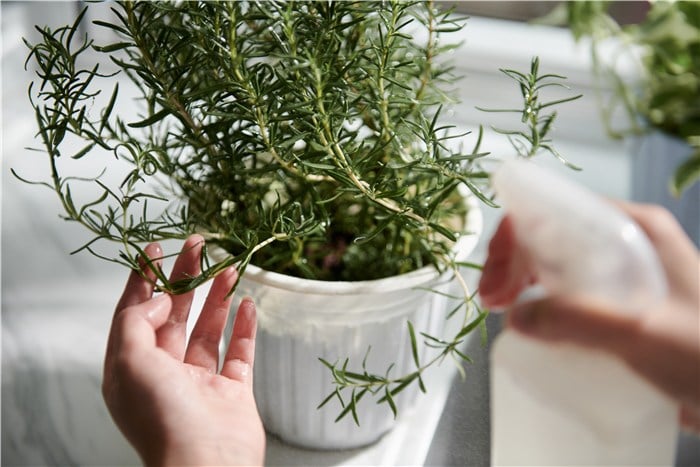
Herbs for Containers - Rosemary
Cilantro
Cilantro is an outstanding herb for container gardening. It requires only well-drained soil and consistent moisture, and it’s perfect for balconies, patios, or windowsills. Additionally, regular harvesting encourages bushier cilantro growth, and sowing new seeds every few weeks ensures a steady supply.
Chives
Chives are perennial plants that can withstand a wide range of temperatures, from 60°F to 70°F (15°C to 21°C). Their mild onion flavor adds a fresh touch to many dishes, and their purple flowers not only attract pollinators but also serve as an attractive ornamental feature.
Oregano
It’s excellent to grow oregano in pots in summer. Oregano is a drought-tolerant plant that thrives in well-drained soil and requires at least 6 hours of direct sunlight per day. It prefers slightly acidic to neutral soil (pH 6.0-7.0) and can grow in a container as small as 12 inches in diameter and depth. Its strong aroma deters most pests, and it is generally low-maintenance, requiring only regular watering and occasional pruning to encourage bushy growth.

Herbs for Containers - Oregano
Lavender
Lavender is popular for its delightful fragrance. It’s adaptable to various climates and requires at least 6-8 hours of direct sunlight daily. When you grow lavender in pots, it can benefit from better drainage and can be easily repotted to protect it from harsh weather conditions. Compact dwarf varieties like 'Thumbelina Leigh' and 'Silver Anouk' are particularly well-suited for container gardening. These plants not only add aesthetic appeal to patios and balconies but also attract pollinators like bees and butterflies.
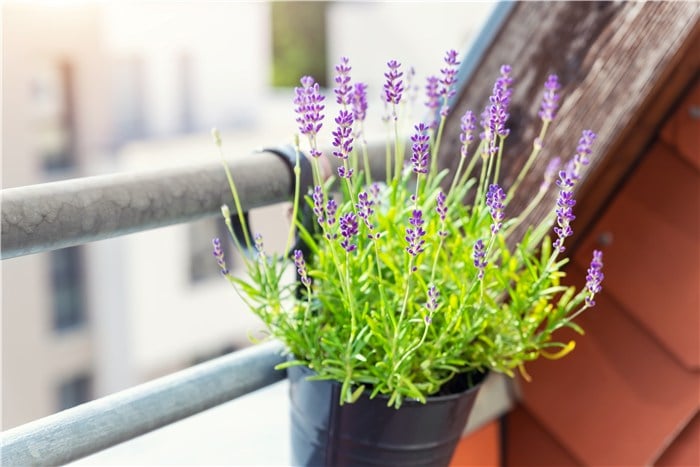
Herbs for Containers - Lavender
Sage
Sage is a perennial that can be grown in USDA hardiness zones 4-9 and typically grows 12 to 24 inches tall and wide. As it requires at least 6 hours of direct sunlight daily, you can grow it in summer. The plant prefers slightly acidic to neutral soil (pH 6.5-7.0) and should be watered thoroughly, allowing the soil to dry out slightly between waterings. Sage is known for its aromatic leaves, which are used in various dishes, especially for seasoning poultry and stuffing.
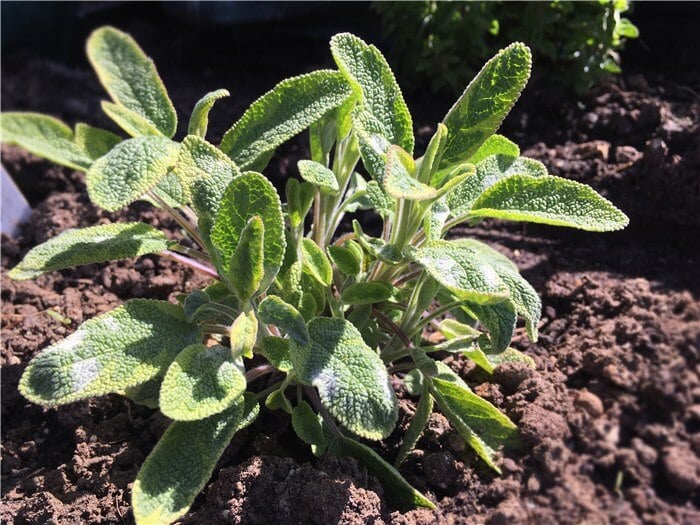
Herbs for Containers - Sage
What Herbs Should Not Be Potted Together?
Due to environmental needs, growth habits, and chemical interactions, some herbs should not be potted together. To ensure healthy growth, it’s important to consider the specific needs of each herb when growing herbs in containers in summer.
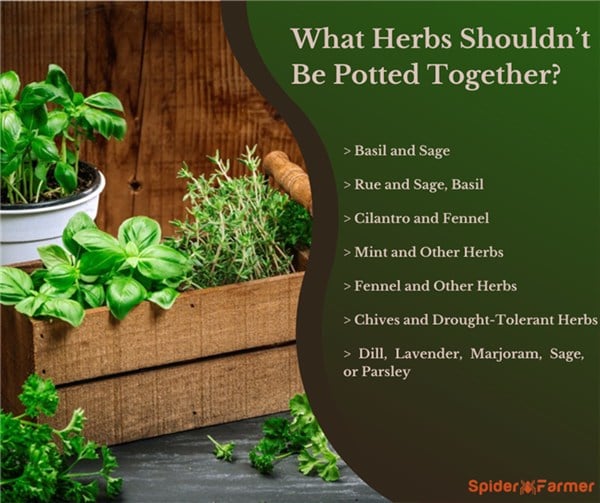
What Herbs Should Not Be Potted Together?
Here are some key combinations to avoid:
Mint and Other Herbs
Mint is highly invasive and can quickly overtake other plants in a pot. It should be grown alone to prevent it from crowding out other herbs. Additionally, different mint varieties (like peppermint and spearmint) should not be planted together, as they can lose their unique characteristics.
Dill, Lavender, Marjoram, Sage, or Parsley
Dill attracts pests that can harm lavender, marjoram, and sage. It also has different soil moisture needs compared to these herbs, which can lead to poor growth. Dill should also be kept away from parsley, as it can inhibit parsley's growth.
Basil and Sage
Basil requires consistently moist soil, while sage prefers drier conditions. Planting them together can lead to water competition and affect the growth of both herbs.
Chives and Drought-Tolerant Herbs
Chives need moist soil, which conflicts with the dry soil preferences of herbs like marjoram, oregano, sage, rosemary, and thyme. Planting them together can lead to competition for moisture and space.
Cilantro and Fennel
These herbs are highly competitive and can inhibit each other's growth. They also have different moisture needs, making them unsuitable for the same pot.
Rue and Sage, Basil
Rue can inhibit the growth of sage and basil, so it's best to keep these herbs separate.
Fennel and Other Herbs
Fennel releases allelochemicals that can inhibit the growth of nearby plants. It should be grown in isolation to avoid affecting other herbs.
Best Practice for Growing Herbs in Containers
After selecting the herbs for containers such as basil, parsley, cilantro, mint, oregano, thyme, and rosemary, you may wonder how to grow herbs in containers. No matter whether you’re a beginner or an expert, concentrate on the following factors, and then you’ll achieve a harvest with ease.
Choose the Right Container
Select a container that is at least 6-8 inches deep to accommodate the root systems of most herbs. Ensure it has drainage holes to prevent waterlogging. You can use pots, window boxes, or even repurposed containers like buckets or cans.
Select High-Quality Soil
Use a well-draining potting mix specifically designed for containers. Avoid garden soil, as it can be too dense and may not drain well. A mix that includes perlite or vermiculite can enhance drainage and aeration.
Light and Placement
Most herbs require at least 6 hours of direct sunlight per day. Place your containers in a sunny spot, such as a windowsill, balcony, or patio. If natural light is limited, consider using LED grow lights as supplemental lighting.
2025 Spider Farmer® SF7000 650W LED Grow Light
2025 Newest Version Spider Farmer® SF1000 100W Samsung LM301H EVO LED Grow Light For 2×2’/3×3′
2025 Newest Version Spider Farmer® SF1000D 100W Full Spectrum LED Grow Light Samsung Diodes For 2×2′
2025 Newest Version Spider Farmer® SF2000 200W Samsung LM301H EVO LED Grow Light For 4×2’/5×3′
2025 Newest Version Spider Farmer® SF2000Pro 200W Samsung LM301H EVO LED Grow Light
2025 Spider Farmer® SF4000 450W Samsung LM301H EVO LED Grow Light For 4×4’/5×5′
Planting
Fill your container with potting mix and leave about an inch of space from the top. Plant your herb seeds or seedlings according to their specific requirements. Generally, seeds should be planted at a depth of about twice their diameter. Water the soil gently but thoroughly after planting.
Watering
Despite the light, you should also focus on the watering routine. During hot weather, regularly check the soil moisture by sticking your finger about an inch into the soil. If it feels dry, it’s time to water. Be careful not to overwater, as this can lead to root rot.
Fertilizing
As nutrients can be depleted quickly, you need to feed herbs in containers regularly. Use a balanced, water-soluble fertilizer every 4-6 weeks.
Pest and Disease Control
Keep an eye out for common pests like aphids and spider mites. Use natural remedies like neem oil or insecticidal soap to control infestations. Ensure good air circulation around your plants to prevent fungal diseases.
Pruning and Harvesting
Regularly prune your herbs to encourage bushy growth and prevent them from becoming leggy. Harvest leaves and stems as needed, but avoid taking more than one-third of the plant at a time to ensure it can continue to grow.
10 Herb Garden Ideas
Despite planting herbs in containers, there are other herb garden ideas worth trying.
Vertical Herb Garden
Maximize space by growing herbs vertically. Use wall-mounted planters, hanging baskets, or a tiered shelf to create a vertical garden. This is ideal for urban homes with limited ground space.
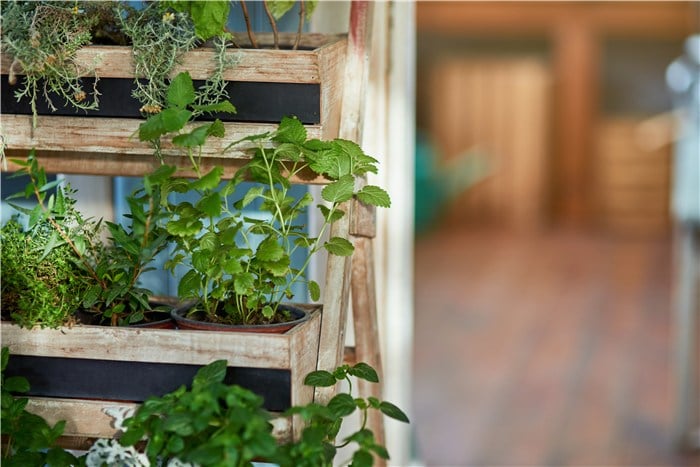
Herb Garden Ideas - Vertical Herb Garden
Kitchen Window Herb Garden
Keep your herbs close at hand by planting them in pots on a sunny kitchen windowsill. This makes it easy to snip fresh herbs while cooking.

Herb Garden Ideas - Kitchen Window Herb Garden
Theme-Based Herb Garden
Create an herb garden with a specific theme, such as a Mediterranean herb garden with rosemary, thyme, and oregano, or a tea garden with chamomile, mint, and lemon balm.
Mobile Herb Garden
Use planters on wheels to create a mobile herb garden. This allows you to move your herbs around to follow the sun or bring them indoors during cold weather.
Herb Garden in a Planter Box
A large planter box can accommodate multiple herbs, making it easy to grow a variety of plants in one container. This is ideal for a small patio or balcony.
Herb Garden in a Strawberry Pot
Strawberry pots have multiple pockets, making them perfect for growing a variety of herbs. Each pocket can hold a different herb, creating a compact and efficient garden.
Herb Garden with Companion Planting
Combine herbs with other plants that benefit each other. For example, plant basil with tomatoes to enhance growth and flavor, or marigolds with herbs to deter pests.
Herb Garden in a Trough
A stone or concrete trough can add a rustic touch to your herb garden. Fill it with soil and plant a variety of herbs for a charming and functional garden.
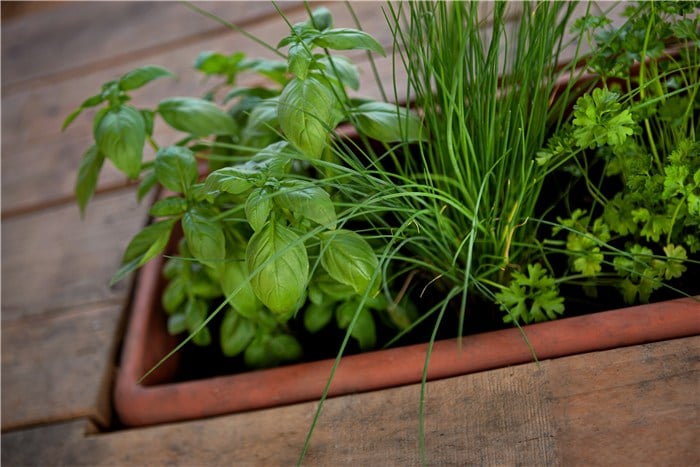
Herb Garden Ideas - Herb Garden in a Trough
Herb Garden in a Gutter
Attach gutters to a wall or fence to create a narrow, space-efficient herb garden. This is perfect for growing herbs like basil and parsley.
Herb Garden in a Wooden Barrel
Similar to a wine barrel, a wooden barrel can be repurposed into a large herb garden. Fill it with soil and plant a variety of herbs around the edges.
Conclusion
By choosing the right container, soil, and herbs, and providing appropriate herb care, you can enjoy a continuous supply of flavorful herbs for cooking and other uses. Starting with easy-to-grow herbs like basil, parsley, and mint can build your confidence and set you on a path to more advanced gardening projects. With a little patience and attention, your potted herb garden will thrive, bringing both beauty and utility to your home.

